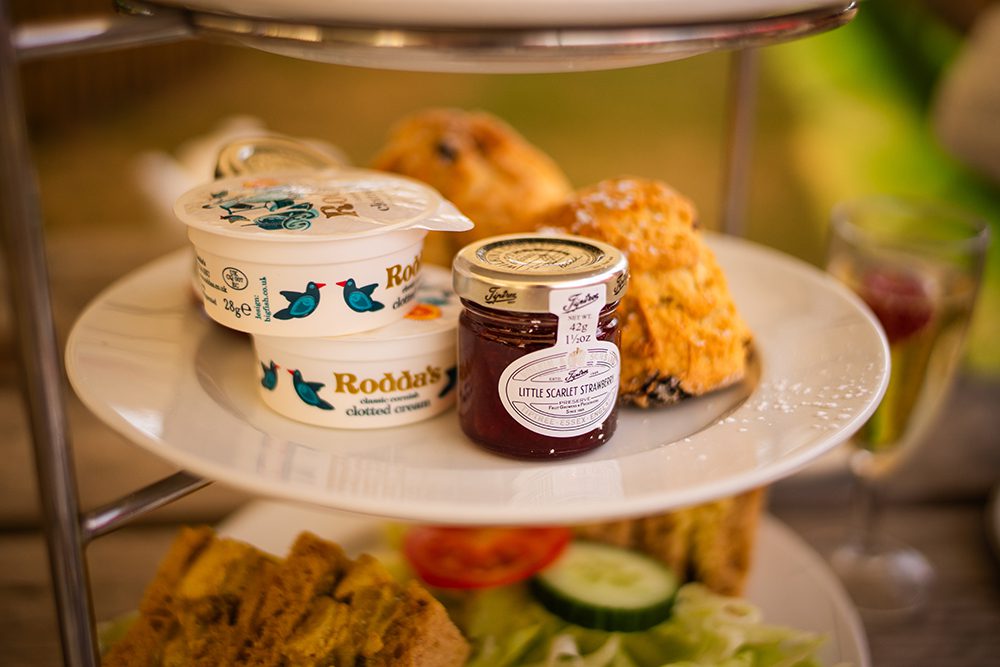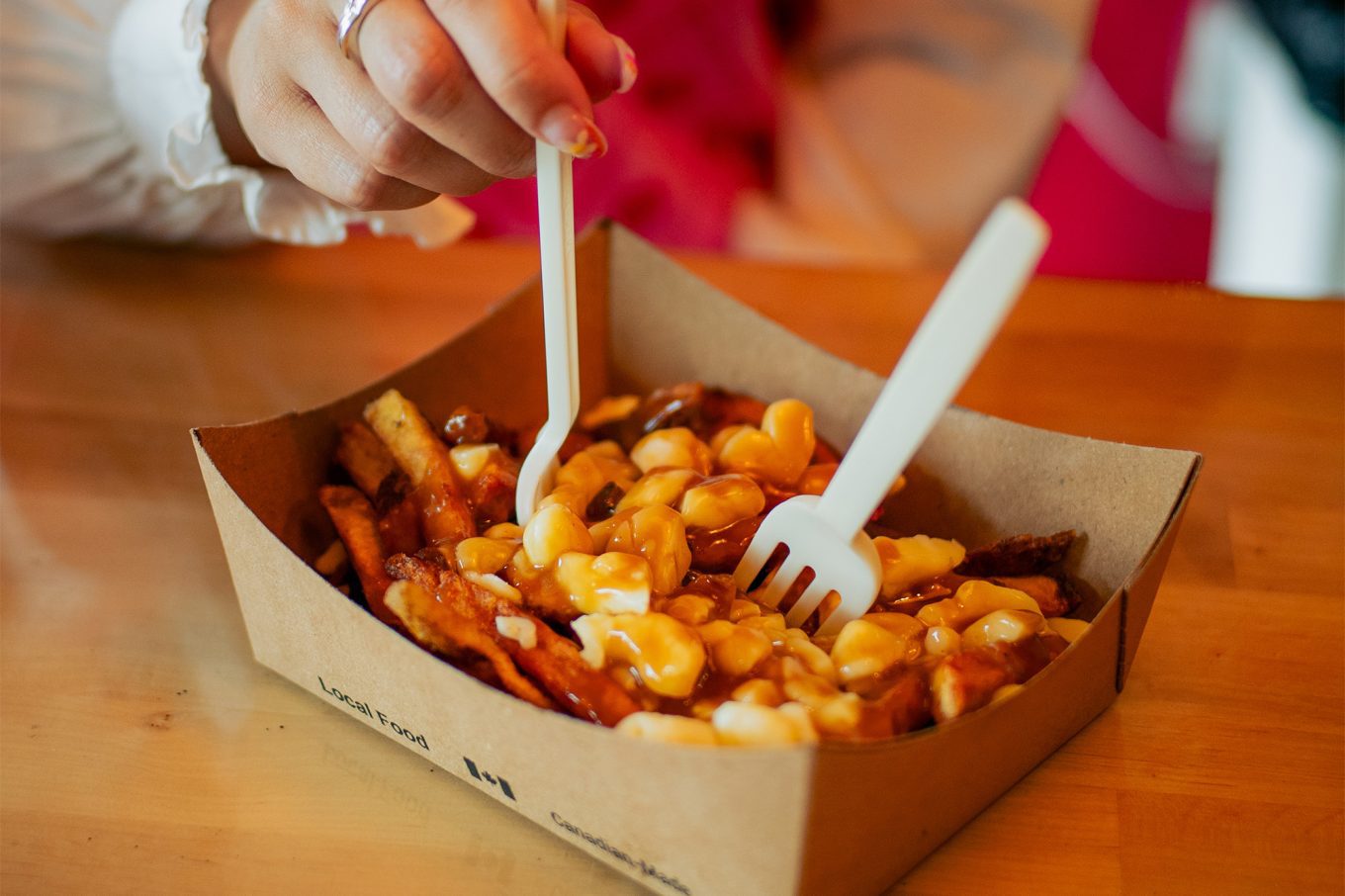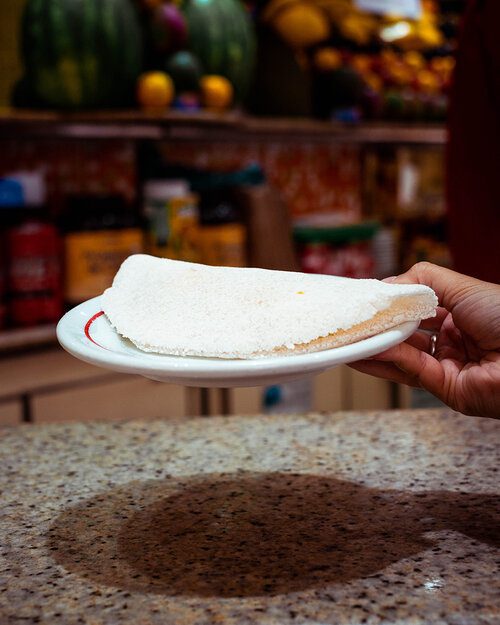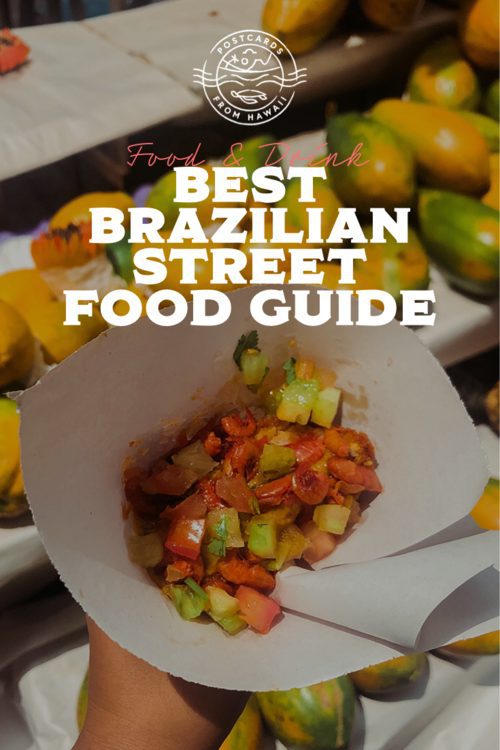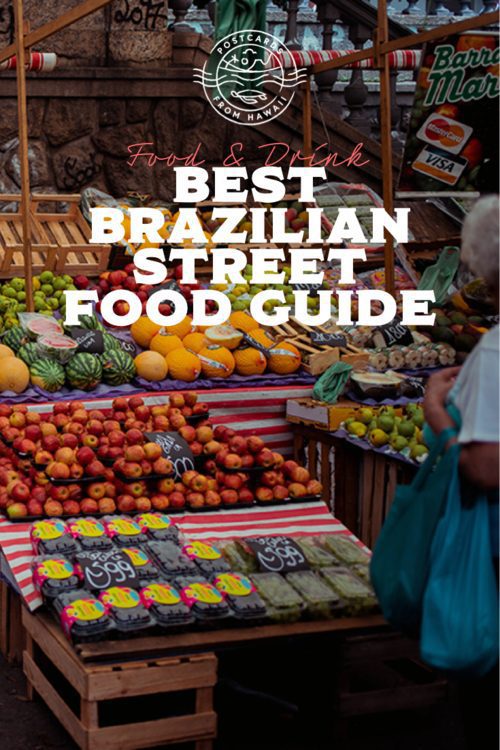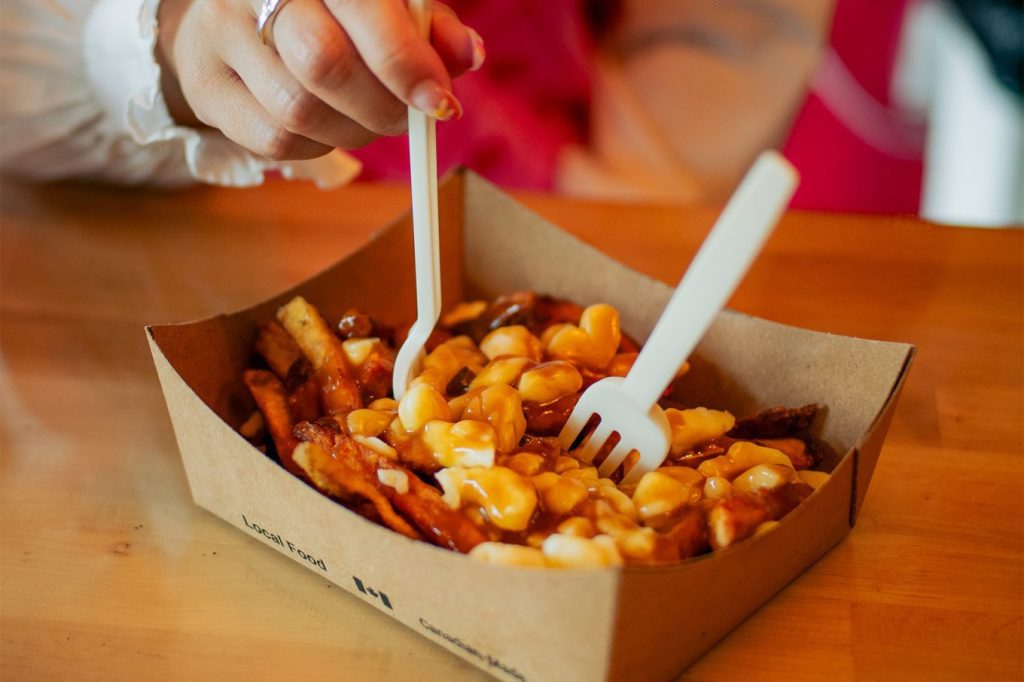From breakfast dishes to sweet treats and drinks, here’s your guide to the best and most important Brazilian street food dishes that you must try whilst in Brazil.
Most of these dishes can be picked up either from the street food carts along Copacabana and Ipanema beaches or from the street corner eateries in town, but I strongly recommend you make a trip out to Feira Livre da Glória which is the farmers market in Glória, Rio de Janeiro which runs every Sunday.
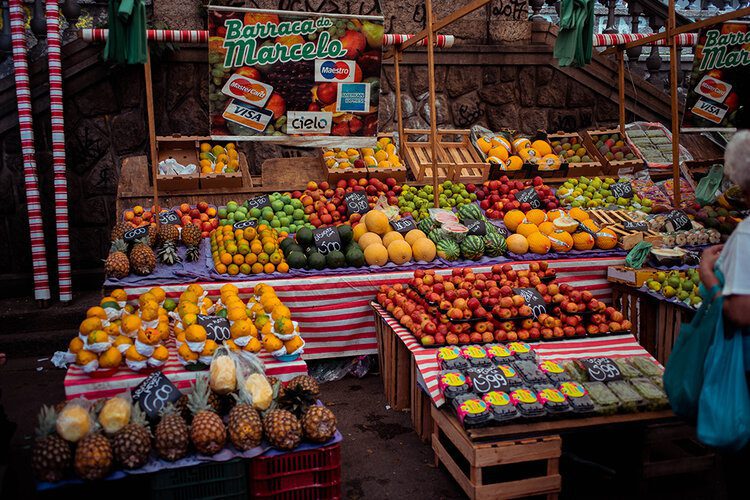
Food
Pão de Queijo
I became wildly obsessed with pão de queijo whilst in Brazil, they’re just so scrumptious! Pão de Queijo translates as cheese bread but it’s more than just a little ball of cheese bread. The origin of this bread is uncertain but it is said that the recipe has existed since the 18th century from African slaves. It is made from the starch of cassava root and is therefore gluten free.
It is mostly eaten for breakfast or as a snack.

Coxinha
A coxinha is the perfect snack for lunch, it’s small but filling and easy to eat on the go. Plus, you can pick one up from any street corner vendor.

It is made from shredded chicken – sometimes shredded chicken and cream cheese – which is rolled in a dough either made from wheat or potato, it’s then breaded and deep-fried.
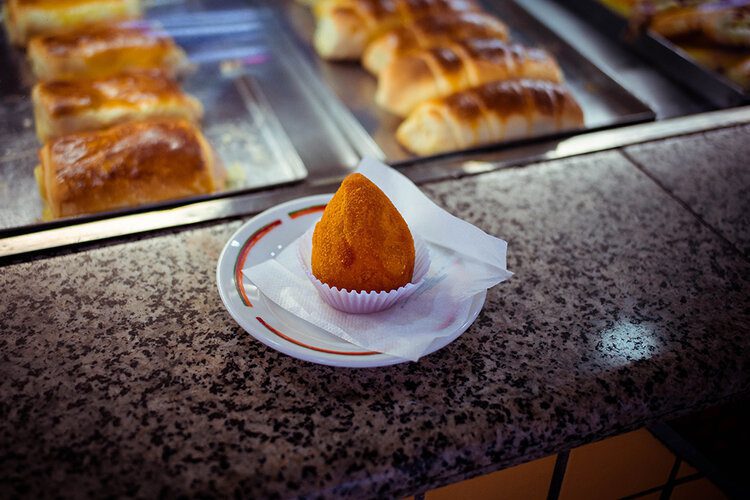
Tapioca
Just like pão de queijo, tapioca is also made from the starch of a cassava root and is also gluten free. In fact, whilst there we learnt that it is a popular substitute for those on a gluten free diet. Tapioca is cooked like an omelette, flat in a saucepan and filled with whatever you choose. It can be made either savoury or sweet.
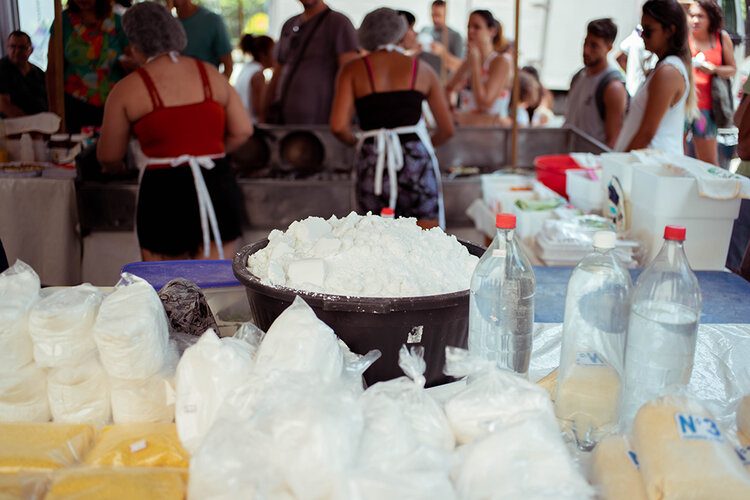
Lorem ipsum dolor sit amet, consectetur adipiscing elit. Ut elit tellus, luctus nec ullamcorper mattis, pulvinar dapibus leo.
Pastel
A pastel is a large fried savoury pastry filled with either cheese, meat, chicken and cream cheese (like the coxinha filling), ham and cheese or palm heart.
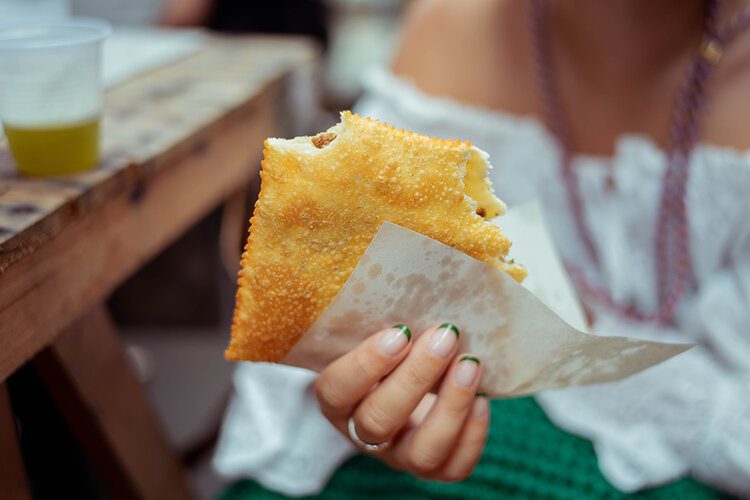
The most popular filling is meat, it’s a seasoned mince meat.
Heads up, these pastries, although delicious, are huge and rather greasy, so I recommend sharing them.
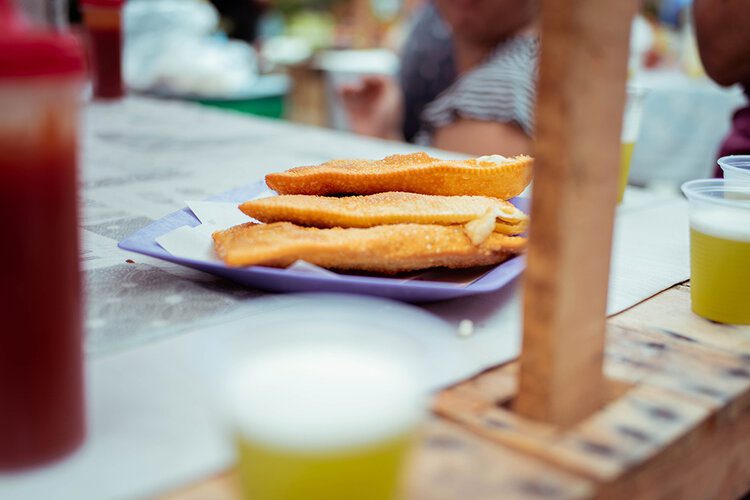
Accarajé
Accarajé is a savoury dish served for lunch and is a very typical street food meal, especially popular in Brazil’s northeastern state of Bahia. It’s made from a deep-fried ball cut in half (made from white beans, soft on the inside and crunchy on the outside), which is then filled with a paste made from bread, shrimp and coconut milk called vatapá, an okra stew called caruru, and finally topped with tiny sun dried shrimp and a fresh salsa made from tomatoes, onions, fresh coriander and hot sauce.
With a strong smoky flavour, it’s quite a potent dish to try, but it’s incredibly popular and will no doubt have a queue.

Don’t forget to bring reusable cutlery!
Açai
Açai is one of the most popular street food dishes you can get out in Brazil. Like ice cream this frozen fruit smoothie cools and refreshes you in the heat, whilst providing all the health benefits that ice cream doesn’t. Açai berries are packed with antioxidants, fibre and calcium. To learn more about açai, check out my previous blog post, Açai smoothie bowl recipe.
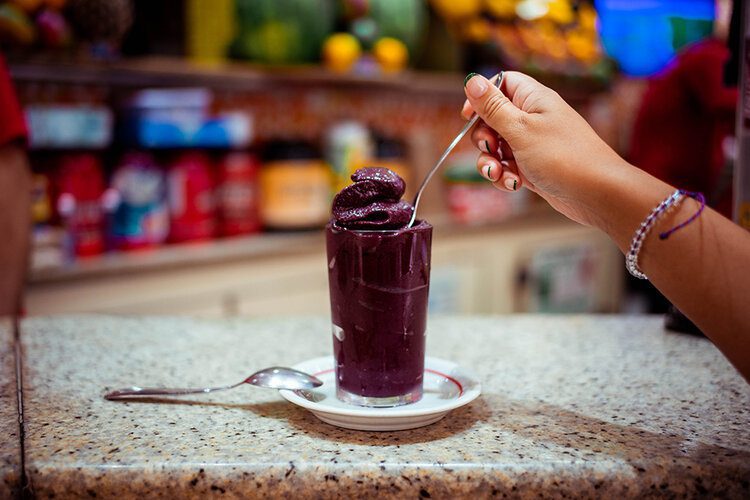
Cocada
Cocada is a traditional sweet cake made from coconut which is known as a sweet or candy in Brazil.
They are made in all sizes from bite-size to ones that you can share with others.
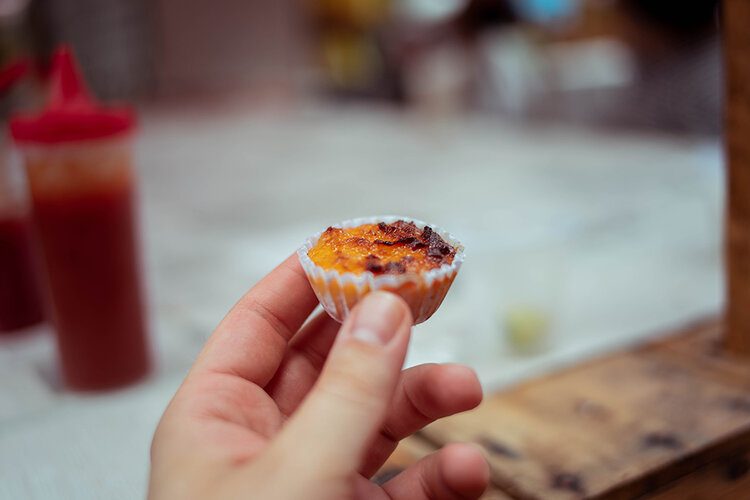
They are also available in different flavours such as mango and passionfruit.
PFH Top Tip: If you will be returning home within 10 days of purchasing, you can take them home as a gift as the amount of sugar in them will preserve them for about 10 days.
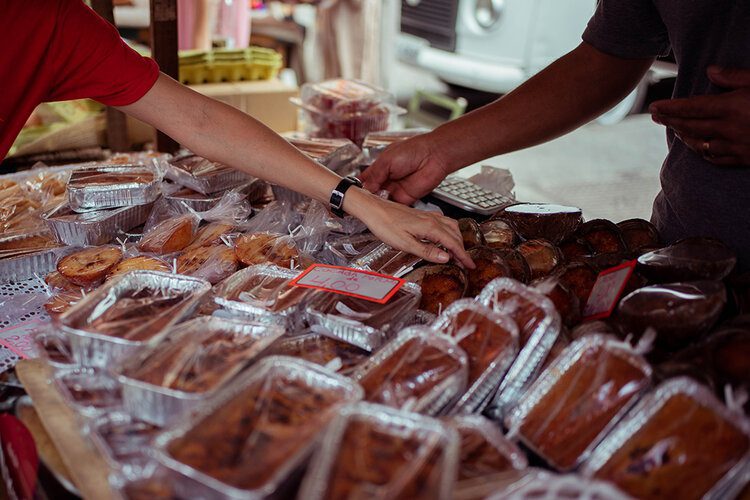
Romeu e Julieta
Romeu e Julieta translated as Romeo and Juliet is the combination of a soft cheese served with a guava fruit sweet. The guava fruit is pressed and rolled in sugar and eaten with this almost sour soft cheese. It can be served many ways depending on where you go, on the market it’s just a lump of cheese and sweet guava, whereas hotels and restaurants will present it as one. It’s named Romeu e Julieta simply because they’re two things that shouldn’t go together but do.
Personally I think it’s delicious but for sure it is an acquired taste, Michael was not a fan.
Traditionally this would be eaten after dinner.
Drinks
Água de coco
All Brazilians believe Água de coco (coconut water) will heal everything. Hangover? Água de coco. Upset stomach? Água de coco. Broken heart? Água de coco! I don’t blame them for believing this though, it’s so pure, refreshing and delicious that I would make up a problem just to drink it!
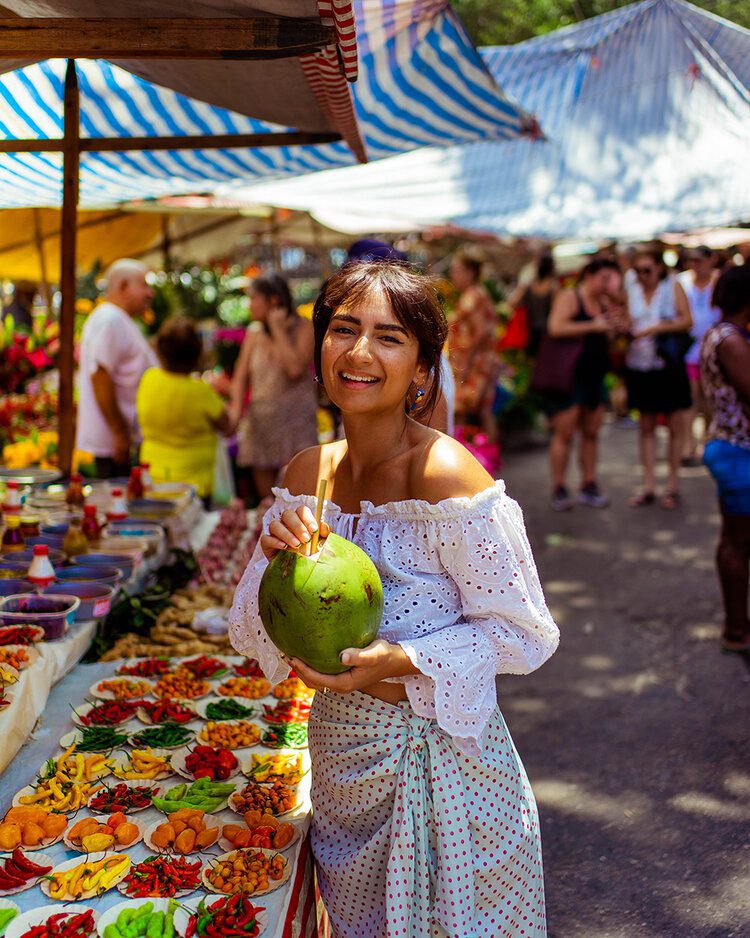
You will mostly find it bottled up, but as my PFH Ohana, you will know that we don’t encourage the usage of single-use plastics. Simply ask them to pop a hole in it and drink it with the reusable straw I know you’re carrying around in your bag. There’s a good chance there’s a language barrier, so just act out popping your straw in a coconut and drinking from the source and they’ll crack it open for you. It’s always more fun this way anyway.
Caldo de Cana
This is a juice made purely from sugar cane. As you can imagine it’s sweet but if you haven’t tried sugar cane before you might find that it has a strong flavour. Even as a half Mauritian lover of sugar cane, I can appreciate it’s sweet so you can drink it with a squeeze of lemon or lime. It’s delightfully refreshing and also somewhat of a palette cleanser.

Caipirinha
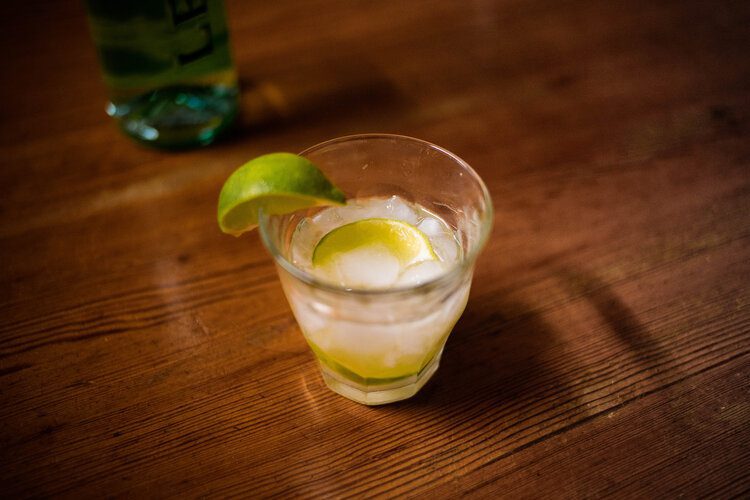
The caipirinha is the national cocktail of Brazil and is made with their world famous liquor, cachaça. Cachaça is a hard liquor made from sugarcane and is the sole ingredient of a caipirinha. To make your own, take a look at my previous blog post, 5 jet setter cocktails.
.
There you have it, eight of the best street food dishes and three drinks that you absolutely cannot leave Brazil without trying at least once, although I doubt you will only eat them once!
Aloha, Gabriella



